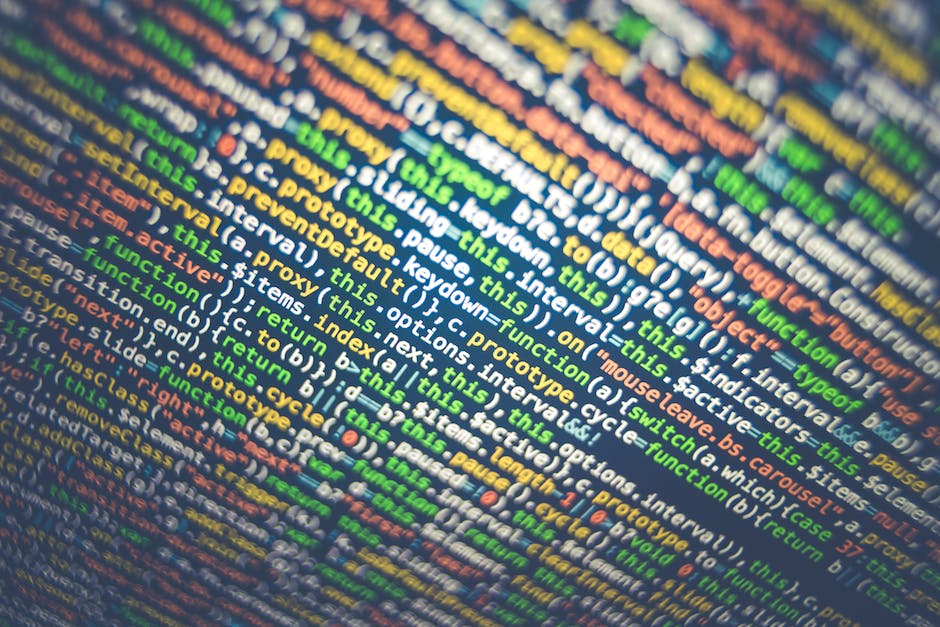Machine learning, a branch of artificial intelligence, has been making waves in the tech industry. It’s a field that revolves around the use of algorithms to parse data, learn from it, and then make predictions or decisions. Two such fundamental algorithms are Regression and Classification, which are most commonly used in predictive modeling and machine learning frameworks. Understanding these concepts is vital for anyone interested in machine learning, as they form the foundation of many advanced algorithms and techniques.

Defining Regression in Machine Learning
So, what exactly is Regression? In the simplest terms, Regression is a type of supervised learning approach that’s used for predicting a continuous outcome. It’s all about finding relationships among variables. For instance, you might use regression to predict the price of a house based on its size, location, and other factors. In this scenario, the predicted outcome (the price of the house) is a continuous value, which can range from any value within a given range. This is the essence of regression – predicting a continuous outcome based on a set of variables.
Setting the Stage: Introduction to Classification
On the other hand, we have Classification. Like Regression, Classification is also a supervised learning approach. However, unlike regression, classification is used for predicting a categorical outcome. This means that the predicted outcome is a category, like ‘yes’ or ‘no’, ‘spam’ or ‘not spam’, ‘dog’ or ‘cat’, and so on. In other words, classification sorts data into categories for further analysis. To give you a practical example, imagine a machine learning model that classifies emails as ‘spam’ or ‘not spam’. This is a classic case of a classification problem, where the outcome is a category, not a continuous value.
Differences Between Regression and Classification
At first glance, Regression and Classification might seem similar. They both are predictive modeling techniques and their goal is to understand the relationship between the dependent (target) and independent variables (features). However, they are fundamentally different in terms of the type of problems they solve and the kind of results they produce. Let’s unpack these differences.
Outcome Variables: Continuous vs Categorical
One significant difference between Regression and Classification lies in the type of outcome they predict. Regression models are used when the outcome is a continuous variable. This means that the output can be any real number, like a person’s weight, a house’s price, or the temperature on a given day.
On the other hand, Classification models are used when the outcome is a categorical variable. The output is a category or class, such as ‘yes’ or ‘no’, ‘spam’ or ‘not spam’, or ‘cat’, ‘dog’, or ‘bird’. The output is limited to a finite set of options, making it discrete rather than continuous.
Does this make one better than the other? Not necessarily. It simply means they are used for different types of problems.
Use Cases and Applications
Let’s look at some practical examples. Regression models are often used in fields like real estate for price prediction, in finance for risk assessment, or in retail for sales forecasting. These are all instances where the output is a continuous variable.
Classification models, on the other hand, are commonly used in healthcare for disease diagnosis (is a tumor malignant or benign?), in email filtering (is an email spam or not?), or in banking (will a customer default on a loan or not?). Here, the output is categorical.
Understanding the Concept of Supervised Learning
So, what ties Regression and Classification together? They’re both types of supervised learning. But what does this mean?
Supervised learning is a type of machine learning where the model is trained on a labeled dataset. This means that the dataset used to train the model contains both the input data (features) and the correct output (target variable). The model learns from this data and then uses what it has learned to predict the outcome for new, unseen data.
Both Regression and Classification fall under the umbrella of supervised learning. They both learn from labeled data and then predict outcomes based on that learning. This makes them incredibly valuable tools in the world of machine learning and data science.
A Closer Look at Regression Models
Now that we have a basic understanding of what regression is, let’s take a closer look at some specific types of regression models used in machine learning. A regression model is like a tool in your toolbox, and just like how different tools have different uses, each regression model has its own unique applications and uses.
Firstly, let’s talk about Linear Regression. Linear regression is perhaps the most well-known and well-understood algorithm in statistics and machine learning. It is used when there’s a correlation between the dependent and independent variables in a dataset. What does this mean? Well, imagine you’re trying to predict the price of a house based on its size. In this case, the size of the house would be the independent variable, and the price would be the dependent variable. As the size of the house increases, the price would likely increase as well, showing a linear relationship.
But what if the relationship between the independent and dependent variables is not linear? That’s where Logistic Regression comes into play. Logistic regression is a type of regression analysis used when the dependent variable is binary – like yes/no or true/false. For example, you might use logistic regression to predict whether an email is spam (1) or not spam (0) based on features like the email’s content or the sender’s email address.
Exploring Various Classification Models
Just as there are different types of regression models, there are also various types of classification methods. Each has its own strengths and weaknesses, and each is suited to different types of problems.
Let’s start with Decision Trees. Decision Tree is a flowchart-like structure where each internal node represents a feature (or attribute), each branch represents a decision rule, and each leaf node represents an outcome. For example, a decision tree could be used to decide whether to play outside based on the weather. The decision rules might include “Is it raining?” or “Is it windy?”
Next, let’s discuss Random Forests. A Random Forest is a collection of decision trees, hence the ‘forest’. Each tree in the random forest spits out a class prediction and the class with the most votes becomes the model’s prediction. This model is particularly effective because it reduces the risk of overfitting by averaging the result over a number of decision trees.
Finally, let’s review Support Vector Machines (SVM). SVM is a powerful and flexible classification algorithm. It works by finding a hyperplane that best separates the classes in the feature space. For example, in a two-dimensional space, a hyperplane is a line that optimally divides the data into two classes.

When to Use Regression vs Classification
Have you ever wondered when to use regression over classification, or vice versa? It all boils down to the nature of the problem at hand and the type of data you’re dealing with.
Regression algorithms are typically used when the output variable is continuous or numeric in nature. For instance, if you’re trying to predict the price of a house based on certain features like its size, location, or the number of rooms, a regression algorithm would be the appropriate choice.
On the other hand, classification algorithms come into play when you’re dealing with categorical output variables. If you’re trying to determine whether an email is spam or not, or if a tumor is malignant or benign based on certain features, a classification algorithm would be the ideal choice.
Learning and Mastering Regression and Classification
Are you interested in learning more about regression and classification? There are countless resources available to help you master these fundamental machine learning concepts.
For a deep understanding of regression, “The Elements of Statistical Learning: Data Mining, Inference, and Prediction” by Trevor Hastie, Robert Tibshirani, and Jerome Friedman is an excellent resource. This book provides a comprehensive introduction to statistical learning theory, including linear and logistic regression.
When it comes to mastering classification, “Pattern Classification” by Richard O. Duda, Peter E. Hart, and David G. Stork is highly recommended. This book offers a systematic account of the major topics in pattern recognition, based on the fundamental principles of statistics and probability theory.
Online platforms like Coursera, edX, and Udacity also offer a variety of courses on machine learning where you can learn both regression and classification from world-class experts.
The Future of Regression and Classification in Machine Learning
As we step into the future of machine learning, regression and classification continue to hold significant value. These fundamental concepts form the basis of many advanced machine learning algorithms and techniques.
New trends and advancements in machine learning, such as deep learning and reinforcement learning, still rely on the principles of regression and classification. The importance of these two concepts cannot be overstated, especially in the tech industry where predictive modeling is critical.
From predicting customer behavior to detecting fraudulent transactions, from personalizing user experiences to improving healthcare outcomes, regression and classification will continue to play an instrumental role in solving complex problems and unlocking new opportunities.
